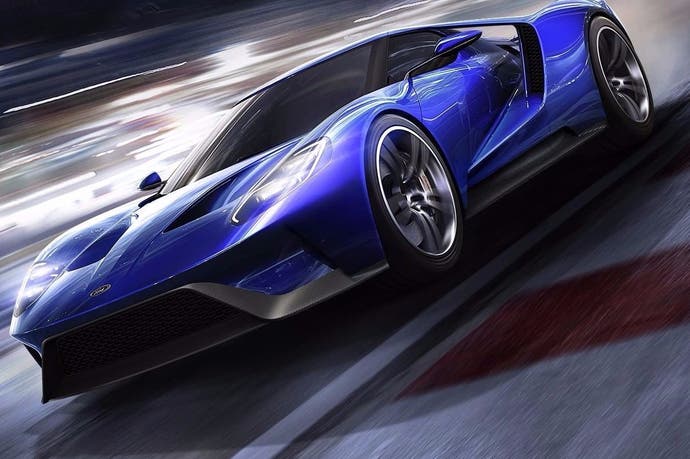Face-Off: Forza Motorsport 6 Apex on PC
A free-to-play DX12 version on PC - but what does it offer over Xbox One?
Developer Turn 10 brings Forza Motorsport 6 to PC with a new subtitle, Apex - a release that adds a twist to last-year's Xbox One release. It's a remixed, free-to-play exclusive on Windows 10 that strips track and car selection down to the raw highlights, but powers its core driving with the same ForzaTech engine. The good news is - for the content that makes the cut - the game scales very well across a range of PC setups tested, while visual boosts over Xbox One are also substantial.
To start with visuals first, perhaps the most impressive aspect of Turn 10's PC port is its graphics menu. A unique dynamic mode is offered here, and much like the dynamic resolution setup seen in console titles like Halo 5 or Doom (where the pixel count is adjusted to hold a firm 60fps), this instead scales the quality of all visual settings in order to stabilise performance. Whether it's shadows, reflections, particle effects or textures, each can be set to adjust on-the-fly while playing to ensure 60fps is maintained - or if you prefer, you can fix each to the quality preset you truly want, on a spectrum from low to ultra.
It's a fantastic idea - long-time overdue for PC gaming - and helps to keep frame-rates smooth in areas where your GPU may be struggling. It also means that the engine hands in the very best visuals possible given your PC's capabilities, at any given point. Incidentally, this dynamic mode is applied to an extent on Xbox One already, allowing the game to shift certain variables. In one case, frame-rates on rear-view mirror reflections shift between 30fps and 60fps, based on the number of cars rendered on-screen.
In fixing all settings to maximum on PC though, you get the works. The number one advantage over Xbox One is in image quality, where the option to add up to 8x multi-sample anti-aliasing (MSAA) is a huge boon over the console edition's form of EQAA (standing for enhanced quality) - a custom form of multi-sampling that's a feature of AMD graphics hardware. Unfortunately, Xbox One's native 1920x1080 image isn't always best presented with its chosen technique, where sampling on stair-step edges is somewhat inconsistent. Pixel crawl still flares up across car outlines at times, and visual noise is a distracting presence on grills and fences.
The perceptible result on Xbox One varies, and in motion there's the sense that the anti-aliasing either works as expected, or not at all. The benefits of finally using high levels of MSAA on PC are self-evident; treatment is consistent across each frame, and sub-pixel break-up is less prevalent on distant details. The end results are undeniably cleaner.
The other major upgrade on PC is in reflection quality. Whether it's the mirror image that plays across your car's bonnet, the varnishing to the exhibition floor, or even puddles in rain-soaked tracks, Xbox One drops its resolution for each. In direct comparison, it runs below PC's very lowest setting; a unique mode designed for console that produces blurrier results. Given the right camera view, it's the most visible shortfall on Xbox One during an actual race, particularly with the camera close to the bonnet, and PC is able to push a sharper version of the effect.
A consistent 60fps refresh to reflections is also a big plus, and one less distraction on PC while racing. This includes the rear-view mirror, where a full 60fps is unlocked at PC's high settings, and where Xbox One can half its refresh under heavy load. Curiously, level of detail is also curtailed within Xbox One's rear-view mirror, and roadside stands and trees are stripped from this portion of the screen. PC reinstates these elements entirely, though the draw distance for geometry ahead of the car is largely like-for-like between each.
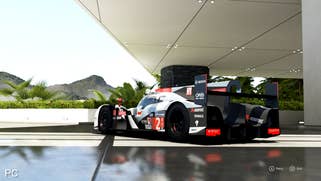

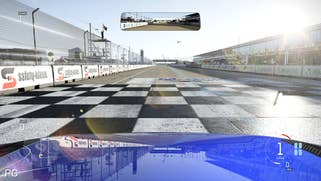



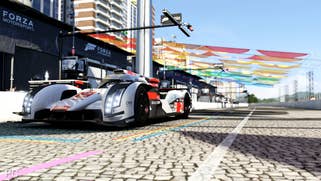

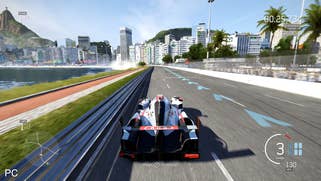
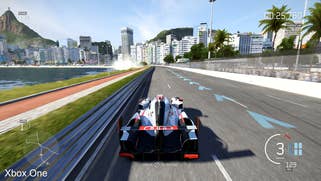

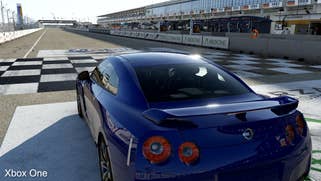
Texture quality is also a sticking point, though less likely to distract once you pick up speed on the road. Normal maps for tarmac and billboards vary in quality for example, and assets across the Rio de Janeiro circuit are visibly compressed on Xbox One (though this isn't the case for every track). PC's very best setting clarifies these rough spots, as well as adding a 16x anisotropic filtering mode to keep textures sharp further into the distance.
It's a similar story for shadows too. The shade falling behind our Audi Quattro's spoiler has Xbox One sitting precisely at PC's low setting. It's a softer, less precise version of what we get from PC's ultra preset - and as one of the game's more taxing settings, it's no surprise we're seeing a cut in this area on console. Meanwhile Xbox One is capable of pushing high-grade shadows elsewhere, such as the showroom, where PC is matched in quality. In motion, this is unlikely to bother those on Xbox One, and it takes some choice screenshots to highlight.
Looking to PC performance while running at top settings, it's a pleasant surprise to find Turn 10's optimisation effort is strong. The popular GTX 970 and R9 390 cards run at 60fps at 1080p with all settings cranked up, and even engaging 8x MSAA fails to stress either GPU. It's a remarkable showing bearing in mind the crippling impact to performance MSAA tends to inflict on most modern game engines, to the point where many simply do not support it at all.
At a higher 2560x1440 output, the delivery on both GTX 970 and R9 390 is still impressive, but prone to drops given the right weather conditions. On the Rio stage by day for example, we get a near-perfect 60fps from each card at max settings. However, this is sadly marred by sharp, frame-time spikes on either GPU, visible hitches in playback that manifest after playing several races in a row, or running a replay for the first time.
These hitches occur more readily on AMD's card, though its exact cause remains unclear. We do see that the game is maxing out two logical cores on a Core i7 4790K overclocked to 4.4GHz, but with temperatures below a 70 degrees Celsius peak we can definitely rule out thermal throttling there. Background streaming may well be the issue here, but the inconsistency in the hitching is troublesome. A restart tends to fix the issue, though as a beta, we hope to see this issue cleared up soon.
Back to the stress-tests though, and GTX 970 and R9 390 stand in good stead even at 1440p. However, in switching to the Sebring club circuit with rain enabled, we get a picture of where the two cards stand in comparison. Memory-sapping alpha transparencies are deployed, and at max settings, 1440p and 8x MSAA, these cards begin to buckle to every splash in the road. This is where we can finally split the difference.
The result? AMD's R9 390 is the clear winner when pushed like this, at times by a margin of up to 10 frames per second. As an average across all tests in this video (with 16 cars in play) the GTX 970 runs at 53.3fps overall, while the R9 390 hits a higher average of 56.2fps. It follows that Nvidia's card also puts in the lowest reading at 35fps, while AMD bottoms out at 41fps in this Sebring test. The results are consistent across matching tests shown in our video below, though owners of either card won't be disappointed with the frame-rates at a less demanding 1080p, while the option remains simply to lower MSAA to stabilise performance at the higher resolution.
Looking at our budget PC test is more telling of how scalable Turn 10's engine actually is. Our Core i3 4130 PC is paired with a GTX 750 Ti card to assess this, where the card's core clock is boosted by 200MHz to give it a fair chance, while memory is pushed up by 400MHz. To contend with this, we have the R7 360, this time pushing its core clock up to 1200MHz, and memory to 1800MHz. In fixing all settings to medium quality at 1080p (with 16x AF, full particle effect resolution, and MSAA left on dynamic), the results are again enlightening.
The GTX 750 Ti and R7 360 are matched in performance throughout the day-time Rio circuit, with a matching lurch to 50fps on approaching the busy city centre. Outside of this and a few stutters, there's not a huge amount to tell the two apart at medium settings at first - each turning in a solid 60fps. A rift forms between the two once we enter the Sebring stage though, with rainy conditions producing dips well below this target number. In this case, the GTX 750 Ti shows a consistent advantage, with an average frame-rate of 54.1fps while the R7 360 turns in an average of 50.8fps.
It's a wide divide, but of course, we wouldn't want to play the game in this state. One solution is to drop the game's particle effects to half resolution, which relieves the strain on memory bandwidth and largely restores 60fps on each. Another is to use the game's dynamic mode, adapting the game's visuals as we play, while the ForzaTech engine strives to hold a locked 60fps. In this case, a return to a rain-soaked Sebring shows all areas previously running below 50fps now smoothing out at 60fps. The only visible cost is in alpha transparency resolution, with splashes now relying on a lower quality asset. As a trade-off for smooth playback we expect of a racing title, it's one well worth making.

Forza Motorsport 6: Apex on PC - the Digital Foundry verdict
Turn 10 makes a worthwhile PC conversion of its Xbox One racer, and Forza Motorsport 6: Apex ranks as one of the better optimised games to use the UWP platform to date. The standout feature here is its dynamic mode though; an idea we hope to see implemented more broadly. For a budget i3 PC paired with a GTX 750 Ti, it does exactly what it says on the tin, adapting the game's visual settings to keep playback smooth on a bandwidth restricted GPU. It works brilliantly, and the applications could stretch to many other games.
As a package it's also a very different beast to the Xbox One original. Apex offers fewer tracks and cars, but the ones making the cut potentially run at higher settings than we see on Xbox One. In practice, most improvements aren't perceptible during the heat of a race, but PC's improved anti-aliasing options, higher-res reflections and broadened rear-view mirror LODs help remove some lasting distractions. Each of PC's additions stack up too, and taken as a whole it amounts to the best looking incarnation of the game.
All that remains for Turn 10 to fix is a lingering stutter glitch, which builds up over play. Otherwise, the game's already well optimised for GPUs across the entire stack, and given its free barrier to entry, it's well worth a try for those running Windows 10. It's a step in the right direction for Microsoft's UWP platform too, having housed the troubled launches of Gears of War Ultimate and Quantum Break. In Forza Motorsport 6: Apex's case there's still a level of this safeguarding, but it's hard to complain when the core package gets so much right.
